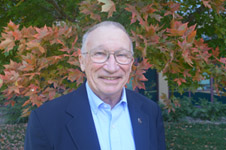Natural Resources, School of
Document Type
Article
Date of this Version
1991
Citation
Miscellaneous Investigations Series Map I-2277
Published by the United States Geological Survey
Abstract
The map area, in west-central Nebraska, is largely covered by surficial deposits of eolian sand, loess, and alluvium ranging in age from Holocene to Pliocene. Holocene and late Pleistocene(?) eolian sand, as much as 300 ft (91 m) thick, covers most of the area north of the North Platte and Platte Rivers, and also covers a small area south of those rivers. The Peoria Loess of Quaternary age overlies most of the remaining upland north of the Platte River in southwestern Logan, northeastern Lincoln, and much of western Custer and extreme northwestern Dawson Counties. Loess also mantles the divide between the North and South Platte Rivers and most of the upland south of the South Platte River in Keith, Lincoln, and Perkins Counties. Holocene alluvium underlies the valleys of the rivers and their larger tributaries. Older alluvium of Pleistocene and Pliocene age occurs beneath loess on the divide between the North and South Platte Rivers, beneath eolian sand along the north side of the North Platte River valley, and along the Dismal and Middle Loup Rivers. Rocks of the Miocene Ogallala Group crop out principally along the south side of the North Platte River valley and on either side of the South Platte River, and locally in roadcuts and along other stream valleys. The Ogallala is present beneath the surficial deposits throughout the quadrangle except in two local areas. The Arikaree Group (Miocene and Oligocene) underlies the Ogallala over much of western Nebraska but no outcrops were recognized in the quadrangle. However, Arikaree deposits have been recognized in drill holes near the Grant County-Arthur County line in the northwestern part of the map area. The Oligocene Brule Formation of the White River Group unconformably underlies the Ogallala Group in outcrops in the quadrangle. Exposures of the Brule are confined to tributary streams along the south side of the North Platte River from Kingsley Dam eastward for about 2 mi (1.2 km). The Brule in the quadrangle conforms to the expanded definition of the formation in western Nebraska by Swinehart and others (1985). Data on the depth to bedrock and the thickness of the Ogallala Group are from logs of drill holes and irrigation wells in the data collections of the Conservation and Survey Division, University of Nebraska-Lincoln. Additional geologic data were derived from maps and reports listed in the "Selected References" and from the unpublished soil survey of Keith County (S.A. Scheinost, unpub. data, 1991). J.B. Swinehart, research geologist, Nebraska Geological Survey, collaborated with the author in preparation of the bedrock contour map.
Scale = 1:250,000
- North Latitude: 42° 0' 0" N (42.0000)
- South Latitude: 41° 0' 0" N (41.0000)
- East Longitude: 100° 0' 0" W (-100.0000)
- West Longitude: 102° 0' 0" W (-102.0000)


